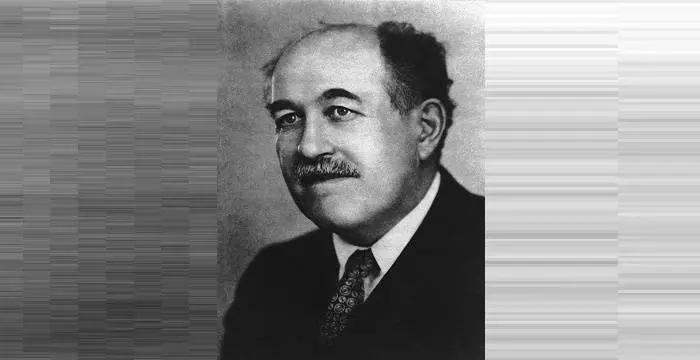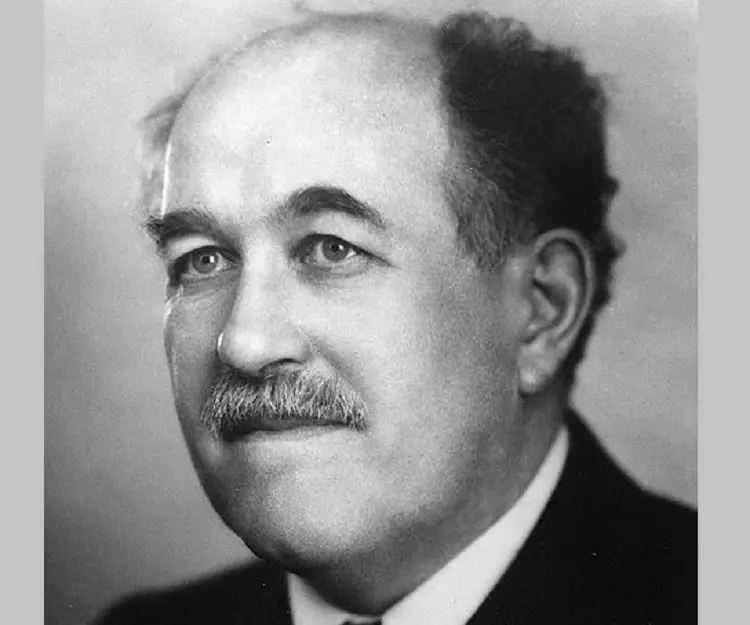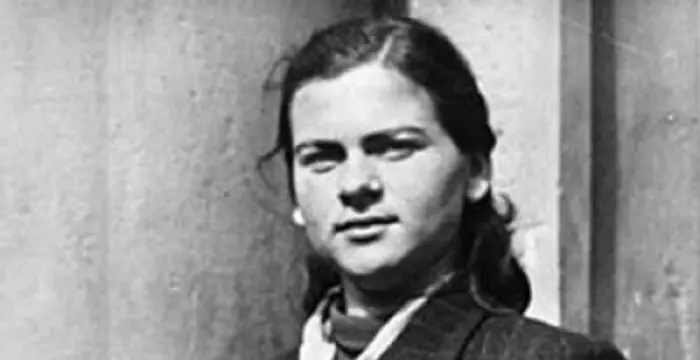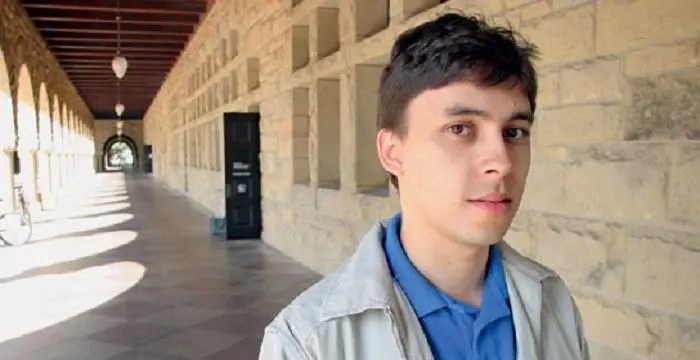
Otto Stern - Physicists, Timeline and Life
Otto Stern's Personal Details
Otto Stern was a German born American physicist who won the Nobel Prize in Physics in 1943
| Information | Detail |
|---|---|
| Birthday | February 17, 1888 |
| Died on | August 17, 1969 |
| Nationality | German |
| Famous | Scientists, Physicists |
| Universities |
|
| Birth Place | Żory |
| Religion | Judaism |
| Gender | Male |
| Sun Sign | Aquarius |
| Born in | Żory |
| Famous as | Physicist |
| Died at Age | 81 |
// Famous Scientists
Juliane Koepcke
Juliane Koepcke is a German-Peruvian biologist, who was the lone survivor among the 92 passengers and crew of the ill-fated LANSA Flight 508 that crashed in the Peruvian rainforest on 24 December 1971. Know more about her life in this biography.
Henry Cavendish
Henry Cavendish was a theoretical chemist and physicist, renowned for discovery of hydrogen and calculation of the mass of earth. To know more about his childhood, profile, timeline and career read on
Konstantin Tsiolkovsky
Konstantin Tsiolkovsky was a Russian rocket scientist and a pioneer of astronautics. This biography provides detailed information about his childhood, family, personal life, career, achievements, etc.
Otto Stern's photo
Who is Otto Stern?
Otto Stern was a German born American physicist who won the Nobel Prize in Physics in 1943. He was born in a prosperous Jewish family towards the end of the nineteenth century in the Kingdom of Prussia. Because of the financial affluence of his family, he did not have to look for jobs immediately after he finished his education. Instead, he worked as Privatdozent in chosen universities for a long time before landing at his first official academic post in the early 1920s. Initially he concentrated more on theoretical problems. It was only after he met great experimentalists like James Franck and Max Volmer that he began to take interest into experimental physics. Within a short period he developed molecular-beam method and discovered spin quantization with Walther Gerlach. It not only brought him fame, but also opportunity for further research work. Measurement of atomic magnetic moments, demonstration of the wave nature of atoms and molecules, and discovery of the proton's magnetic moment are few of his important works. He migrated to the USA and took up American citizenship when Hitler’s Nazi Party came to power. After working at Carnegie Mellon University for more than twelve years he finally retired and settled in California.
// Famous Physicists
Henry Cavendish
Henry Cavendish was a theoretical chemist and physicist, renowned for discovery of hydrogen and calculation of the mass of earth. To know more about his childhood, profile, timeline and career read on
Walter Kohn
Nobel Laureate Walter Kohn was an Austrian-born American theoretical chemist and physicist. Check out this biography to know about his childhood, life, achievements, works & timeline.
Nikola Tesla
Nikola Tesla was a Serbian-American inventor, best known for his development of alternating current electrical systems. This biography of Nikola Tesla provides detailed information about his childhood, life, achievements, works & timeline.
Childhood & Early Life
Otto Stern was born on February 17, 1888 in a prosperous Jewish family in Sohrau, now known as Zory. The town is located in the Upper Silesia region of Poland. However, at the time of his birth, it was part of the Kingdom of Prussia under German Empire.
His father, Oskar Stern, was a rich grain merchant and also owned flour mills. His mother’s name was Eugenia née Rosenthal. The couple had five children, among which Otto was the eldest. In 1892, the family moved to Breslau (now Wroclaw, Poland), where Otto was admitted to Johannes Gymnasium.
As Gymnasium emphasized more on the classics than on mathematics and sciences Stern supplemented his education by reading extensively in private. After passing out from school, he visited several universities as was the norm those days and finally in 1906, entered the University of Breslau with physical chemistry as his major.
Otto Stern completed his studies in 1912 earning his doctorate degree from the University of Breslau. In the same year, he joined Charles University at Prague to study under Albert Einstein.
When in 1913, Einstein returned to his alma mater, ETH Zürich, Otto Stern followed him. For one year he functioned as the Privatdozent of Physical Chemistry at ETH.
In 1914, he joined University of Frankfurt am Main as Privatdozent of Theoretical Physics. In 1915, he received his Habilitation, the highest academic qualification to be attained by any scholar, from the University. Very soon, the World War I broke out and he was inducted into the German army.
Towards the end of the war, he was assigned to military research at Nernst’s laboratory at the University of Berlin. There he became friends with James Franck and Max Volmer, two renowned experimentalists.
Until then Stern had mainly concentrated on theoretical studies of statistical thermodynamics and quantum theory. Now, under the influence of Franck and Volmer, he began to show interest in experimental physics.
Career
Once the war ended in 1918, Otto Stern returned to the University of Frankfurt am Main and remained there till 1921. Initially, he kept working on the theoretical problems and published a paper on the surface energy of solids. Very soon, he began to feel that he should provide experimental proof.
However, before he could complete his experiment, he received his first official academic post. In 1921, he joined the University of Rostock as the Associate Professor of Theoretical Physics.
In 1922, while teaching at Rostock, Stern along with Walther Gerlach performed their historic molecular-beam experiment. Known as Stern–Gerlach experiment, it confirmed the spin quantization theory, which stated that in a magnetic field, atoms can align themselves only in a few directions only.
Next in 1923, Stern joined the University of Hamburg as Professor of Physical Chemistry and Laboratory Director. Here he established an outstanding research group which undertook many pioneering experiments. Because of him University of Hamburg became a well-known center for atomic, molecular and nuclear research.
During this period Stern led further experiments into the quantum nature of matter. These experiments confirmed many other key manifestations such as wave nature of helium and hydrogen atoms by diffracting beams of these atoms, and irregular magnetic moments of proton and deuteron.
As Adolf Hitler and his Nazi Party came to power in Germany in July 1933 Stern had to resign from his position. By then he had become internationally well known. In 1930, he had been awarded an LL.D. by the University of California, Berkeley. Consequently, he decided to shift to the USA.
In 1933, Stern joined Carnegie Mellon University in Pittsburgh, Pennsylvania as Professor of Physics. He remained there until his retirement in 1945 carrying on extensive research in experimental physics.
After retirement, Stern shifted to California and joined University of California, Berkeley as Professor Emeritus. In the same year, he was elected to the National Academy of Sciences. He spent the rest of his life at Berkeley.
Major Works
The Stern–Gerlach experiment of 1922 is one of the most important works carried on by Otto Stern. He and Walther Gerlach sent a beam of silver atoms through inhomogeneous magnetic field onto a glass plate and observed their diffraction.
According to classical physics, the beam should have spread out as a continuous band; instead only two beams were observed. It not only confirmed the spin quantization theory, but also paved the way for further development of modern physics.
Measuring the magnetic momentum of proton by using molecular beam is another of his important work. Undertaken in 1933, the experiment proved that the actual measurement is two and half times of its theoretical value.
He also published many papers. Among them, a series of thirty outstanding papers titled ‘Untersuchung zur Molekularstrahl-Methode, UzM’ (Investigations by the molecular-beam method) is most noteworthy.
Awards & Achievements
Otto Stern received the 1943 Nobel Prize in Physics for his discovery of spin quantization theory. Although the work was done in collaboration with Walther Gerlach, he alone received the prize because Gerlach had stayed back in Germany and was active during Nazi period.
In addition, he was also elected as a member of American Association for the Advancement of Science, American Philosophical Society, National Academy of Sciences and Royal Danish Academy of Sciences.
Personal Life & Legacy
Otto Stern did not marry. As a young man, he was fond of good life and liked to dance. He was also a good tennis player and had many friends.
On March 8, 1939, he became a naturalized citizen of the United States of America. He spent the last part of his life at Berkeley, California. There he led a secluded life, but remained interested in the new discoveries in particle physics and astrophysics. He also went to movies regularly.
He died on August 17, 1969 at the age of 81 at Berkeley. He was stricken with heart attack while watching a movie and died soon after. He was buried in Sunset View Cemetery, El Cerrito, CA.
Kinetics of a photophysical intermolecular deactivation process has been named ‘Otto-Volmer Relationship’ after Otto Stern and his lifelong friend Max Volmer. The two scientists had worked closely for a long time since the World War I.
Trivia
Otto Stern was the second most nominated person for the Nobel Prize. He received 82 nominations between 1925 and 1945. He ultimately won it in 1943.
// Famous Aquarius Celebrities peoples
Jessii Vee
Check out all that you wanted to know about Jessii Vee, the famous Canadian Vlogger & YouTube Personality; her birthday, her family and personal life, her boyfriends, fun trivia facts and more.
Luara Fonseca
Luara Fonseca, known on the web as “luaraff,” is a musical.ly star. Check out this biography to know about her childhood, family life, achievements and fun facts about her.
Shane Blanchard
Shane Blanchard is an American TV actor. Let’s take a look at his family and personal life including age, birthday, net worth, family life and some fun facts.
Otto Stern's awards
| Year | Name | Award |
|---|---|---|
Other | ||
| 0 | Nobel Prize in Physics | |
Otto Stern biography timelines
- // 17th Feb 1888Otto Stern was born on February 17, 1888 in a prosperous Jewish family in Sohrau, now known as Zory. The town is located in the Upper Silesia region of Poland. However, at the time of his birth, it was part of the Kingdom of Prussia under German Empire.
- // 1892His father, Oskar Stern, was a rich grain merchant and also owned flour mills. His mother’s name was Eugenia née Rosenthal. The couple had five children, among which Otto was the eldest. In 1892, the family moved to Breslau (now Wroclaw, Poland), where Otto was admitted to Johannes Gymnasium.
- // 1906As Gymnasium emphasized more on the classics than on mathematics and sciences Stern supplemented his education by reading extensively in private. After passing out from school, he visited several universities as was the norm those days and finally in 1906, entered the University of Breslau with physical chemistry as his major.
- // 1912Otto Stern completed his studies in 1912 earning his doctorate degree from the University of Breslau. In the same year, he joined Charles University at Prague to study under Albert Einstein.
- // 1913When in 1913, Einstein returned to his alma mater, ETH Zürich, Otto Stern followed him. For one year he functioned as the Privatdozent of Physical Chemistry at ETH.
- // 1914 To 1915In 1914, he joined University of Frankfurt am Main as Privatdozent of Theoretical Physics. In 1915, he received his Habilitation, the highest academic qualification to be attained by any scholar, from the University. Very soon, the World War I broke out and he was inducted into the German army.
- // 1918 To 1921Once the war ended in 1918, Otto Stern returned to the University of Frankfurt am Main and remained there till 1921. Initially, he kept working on the theoretical problems and published a paper on the surface energy of solids. Very soon, he began to feel that he should provide experimental proof.
- // 1921However, before he could complete his experiment, he received his first official academic post. In 1921, he joined the University of Rostock as the Associate Professor of Theoretical Physics.
- // 1922In 1922, while teaching at Rostock, Stern along with Walther Gerlach performed their historic molecular-beam experiment. Known as Stern–Gerlach experiment, it confirmed the spin quantization theory, which stated that in a magnetic field, atoms can align themselves only in a few directions only.
- // 1922The Stern–Gerlach experiment of 1922 is one of the most important works carried on by Otto Stern. He and Walther Gerlach sent a beam of silver atoms through inhomogeneous magnetic field onto a glass plate and observed their diffraction.
- // 1923Next in 1923, Stern joined the University of Hamburg as Professor of Physical Chemistry and Laboratory Director. Here he established an outstanding research group which undertook many pioneering experiments. Because of him University of Hamburg became a well-known center for atomic, molecular and nuclear research.
- // 1925 To 1943Otto Stern was the second most nominated person for the Nobel Prize. He received 82 nominations between 1925 and 1945. He ultimately won it in 1943.
- // Jul 1930 To Jul 1933As Adolf Hitler and his Nazi Party came to power in Germany in July 1933 Stern had to resign from his position. By then he had become internationally well known. In 1930, he had been awarded an LL.D. by the University of California, Berkeley. Consequently, he decided to shift to the USA.
- // 1933 To 1945In 1933, Stern joined Carnegie Mellon University in Pittsburgh, Pennsylvania as Professor of Physics. He remained there until his retirement in 1945 carrying on extensive research in experimental physics.
- // 1933Measuring the magnetic momentum of proton by using molecular beam is another of his important work. Undertaken in 1933, the experiment proved that the actual measurement is two and half times of its theoretical value.
- // 8th Mar 1939On March 8, 1939, he became a naturalized citizen of the United States of America. He spent the last part of his life at Berkeley, California. There he led a secluded life, but remained interested in the new discoveries in particle physics and astrophysics. He also went to movies regularly.
- // 1943Otto Stern received the 1943 Nobel Prize in Physics for his discovery of spin quantization theory. Although the work was done in collaboration with Walther Gerlach, he alone received the prize because Gerlach had stayed back in Germany and was active during Nazi period.
- // 17th Aug 1969He died on August 17, 1969 at the age of 81 at Berkeley. He was stricken with heart attack while watching a movie and died soon after. He was buried in Sunset View Cemetery, El Cerrito, CA.
// Famous German peoples
Jordan Carver
Jordan Carver is a famous German model. Let’s take a close look at her personal life, including her age, career, net worth, achievements and some fun facts.
Jürgen Klopp
Jürgen Klopp is a German football manager, and a former professional football player. Check out this biography to know more about his childhood, family, personal life, etc.
Irma Grese
Irma Grese was a notorious German Nazi concentration camp guard during the Second World War. This biography profiles her childhood, life, horrifying acts, death and other facts.
Juliane Koepcke
Juliane Koepcke is a German-Peruvian biologist, who was the lone survivor among the 92 passengers and crew of the ill-fated LANSA Flight 508 that crashed in the Peruvian rainforest on 24 December 1971. Know more about her life in this biography.
Jawed Karim
Jawed Karim is a German-American internet entrepreneur, technologist and co-founder of the video-sharing website, YouTube. Check out this biography to know about his childhood, family, personal life, achievements, age, etc.
Charles Bukowski
Charles Bukowski was a German-born American novelist, short story writer and poet. With this biography, learn in details about his childhood, life, works, career and timeline
Otto Stern's FAQ
What is Otto Stern birthday?
Otto Stern was born at 1888-02-17
When was Otto Stern died?
Otto Stern was died at 1969-08-17
Where was Otto Stern died?
Otto Stern was died in Berkeley
Which age was Otto Stern died?
Otto Stern was died at age 81
Where is Otto Stern's birth place?
Otto Stern was born in Żory
What is Otto Stern nationalities?
Otto Stern's nationalities is German
What was Otto Stern universities?
Otto Stern studied at University of Wrocław, Goethe University Frankfurt
What is Otto Stern's religion?
Otto Stern's religion is Judaism
What is Otto Stern's sun sign?
Otto Stern is Aquarius
How famous is Otto Stern?
Otto Stern is famouse as Physicist













